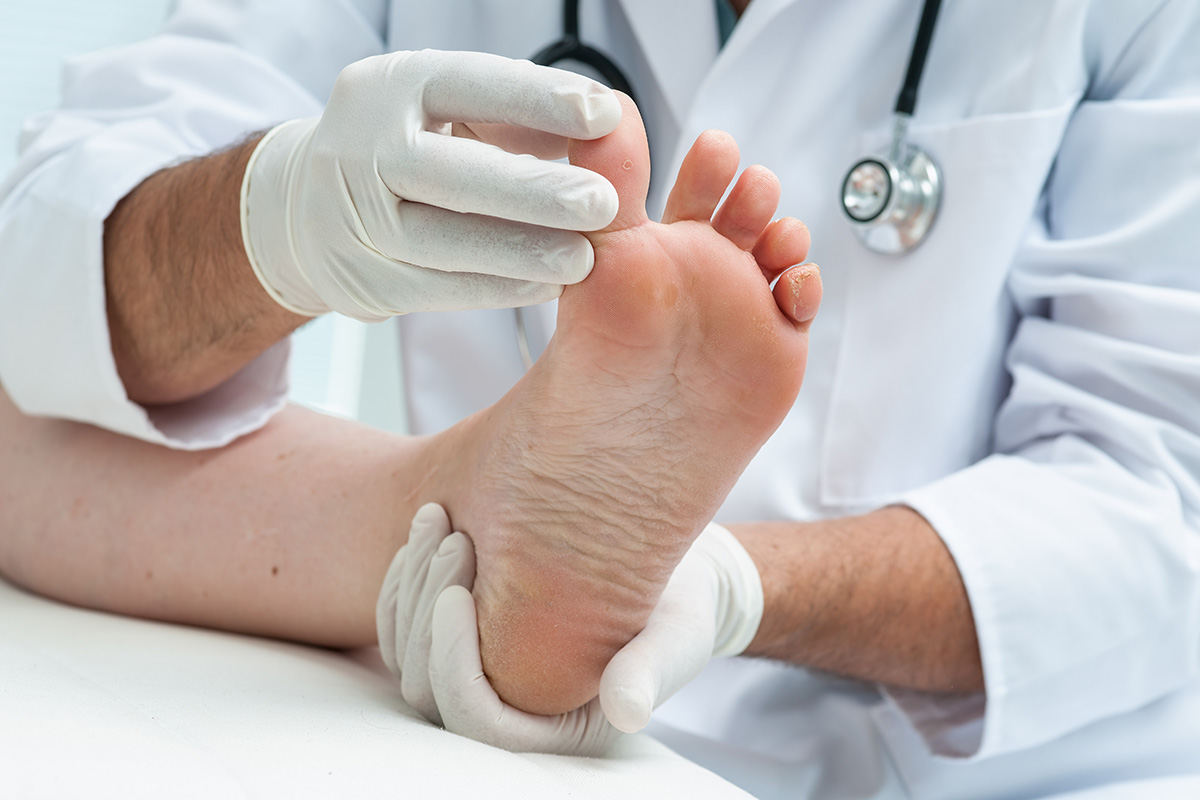10 Reasons Why You Need to See a Podiatrist
According to the U.S. Bureau of Labor Statistics, civilian workers spent an average of 4.17 hours per day standing last year. Whether you're running, walking, or standing for long periods of time, your feet are always hard at work. If you're experiencing any foot problems, it might be time to visit a podiatrist. A podiatrist is a medical professional who specializes in foot and ankle care, Podiatrists have the D.P.M. designation, which stands for Doctor of Podiatric Medicine. There are several reasons why you might need to see one.

1. Foot or heel pain
Foot or heel pain are common reasons to see a podiatrist. There are many possible causes of foot or heel pain, including injuries, overuse, and medical conditions such as plantar fasciitis, heel spurs, Achilles tendonitis, and arthritis. A podiatrist can diagnose the cause of your foot or heel pain and recommend appropriate treatment, which may include R.I.C.E. or P.O.L.I.C.E., stretching exercises, physical therapy, medication, or custom orthotics.
2. Foot and ankle injuries
Foot and ankle injuries such as sprains, strains, and fractures are common and can be caused by a variety of activities, such as sports, exercise, or simply walking on uneven surfaces. A podiatrist can diagnose the extent of the injury and provide appropriate treatment, which may include immobilization, physical therapy, non-surgical treatments, or surgery in severe cases.
3. Bunions
Bunions are bony bumps that form at the base of the big toe, causing the toe to bend towards the other toes. They can be painful and make it difficult to wear shoes. A podiatrist can provide advice on how to manage bunions, which may include wearing special shoes, using orthotics, or surgery in severe cases (bunionectomy).
4. Hammer Toe
Hammer toe is a condition in which a toe bends downward at the middle joint. The second toe is the one most likely to be affected, but this deformity can occur in other toes as well. Sometimes, more than one toe is affected.
5. Flat feet
Flat feet (or flat foot) occur when the arch of the foot collapses, causing the entire foot to touch the ground. This can cause pain and lead to other foot problems. A podiatrist can diagnose and treat flat feet with orthotics, physical therapy, or other treatment options.
6. Ingrown toenails
Ingrown toenails occur when the edge of a toenail grows into the skin, causing pain, redness, and swelling. If left untreated, ingrown toenails can lead to infection. A podiatrist can remove the ingrown portion of the nail and provide advice on how to prevent it from happening again.
7. Fungal toenail infections
Fungal toenail infections can be unsightly and cause the nails to become thick, discolored, and brittle. They can also be difficult to treat with over-the-counter remedies. A podiatrist can diagnose and treat fungal toenail infections with prescription medications, laser therapy, or other treatment options.
8. Plantar warts
Plantar warts are caused by a virus and appear as small, rough growths on the soles of the feet. They can be painful and difficult to remove with over-the-counter treatments. A podiatrist can use a variety of treatment options, including laser therapy, to remove plantar warts.
9. Gout
Gout is a form of arthritis. It causes pain and swelling in your joints. For many people, it starts in the big toe. Gout is treated with medications, getting regular exercise, and by losing weight.
10. Diabetic foot care
Diabetic foot is a term used to describe foot problems that occur in people with diabetes. According to the CDC, 11.3% of the US population has diabetes and 38.0% of the adult US population has prediabetes. Diabetes can cause damage to the nerves and blood vessels in the feet, leading to a loss of sensation and poor circulation. This can make it difficult to feel pain, heat, or cold in the feet, and can increase the risk of developing foot ulcers, infections, and other complications.
Diabetic foot problems can range from mild to severe, and can include:
-
Neuropathy: Nerve damage in the feet can cause tingling, numbness, or a burning sensation. This can make it difficult to detect injuries or infections.
-
Peripheral arterial disease: Diabetes can cause damage to the blood vessels in the feet, reducing blood flow to the area. This can lead to poor wound healing and an increased risk of infections.
-
Foot ulcers: These are open sores that develop on the feet and can be difficult to heal. They can become infected and lead to more serious complications.
-
Charcot foot: This is a condition in which the bones in the foot become weakened and can break or shift out of place. This can cause the foot to become deformed and lead to difficulty walking.
-
Infections: Diabetes can weaken the immune system, making it harder to fight off infections. This can lead to serious foot infections that can spread to the bone and require amputation in severe cases.
Prevention and management of diabetic foot problems is important to avoid serious complications. People with diabetes should inspect their feet regularly and report any injuries or changes to their doctor or podiatrist. Good foot care includes keeping feet clean and dry, wearing comfortable shoes that fit well, and avoiding walking barefoot. Regular foot exams by a healthcare professional can also help detect and manage any foot problems as early as possible.
If you're experiencing any foot pain or discomfort, or have any issues with your feet, you should consider seeing a podiatrist. The specialists at The Centers for Advanced Orthopaedics are here to help you—from diagnosis, to treatment and rehabilitation. Schedule an appointment today!
Not sure if you need to see a podiatrist? Call VantaStat to get connected to a specialist.

